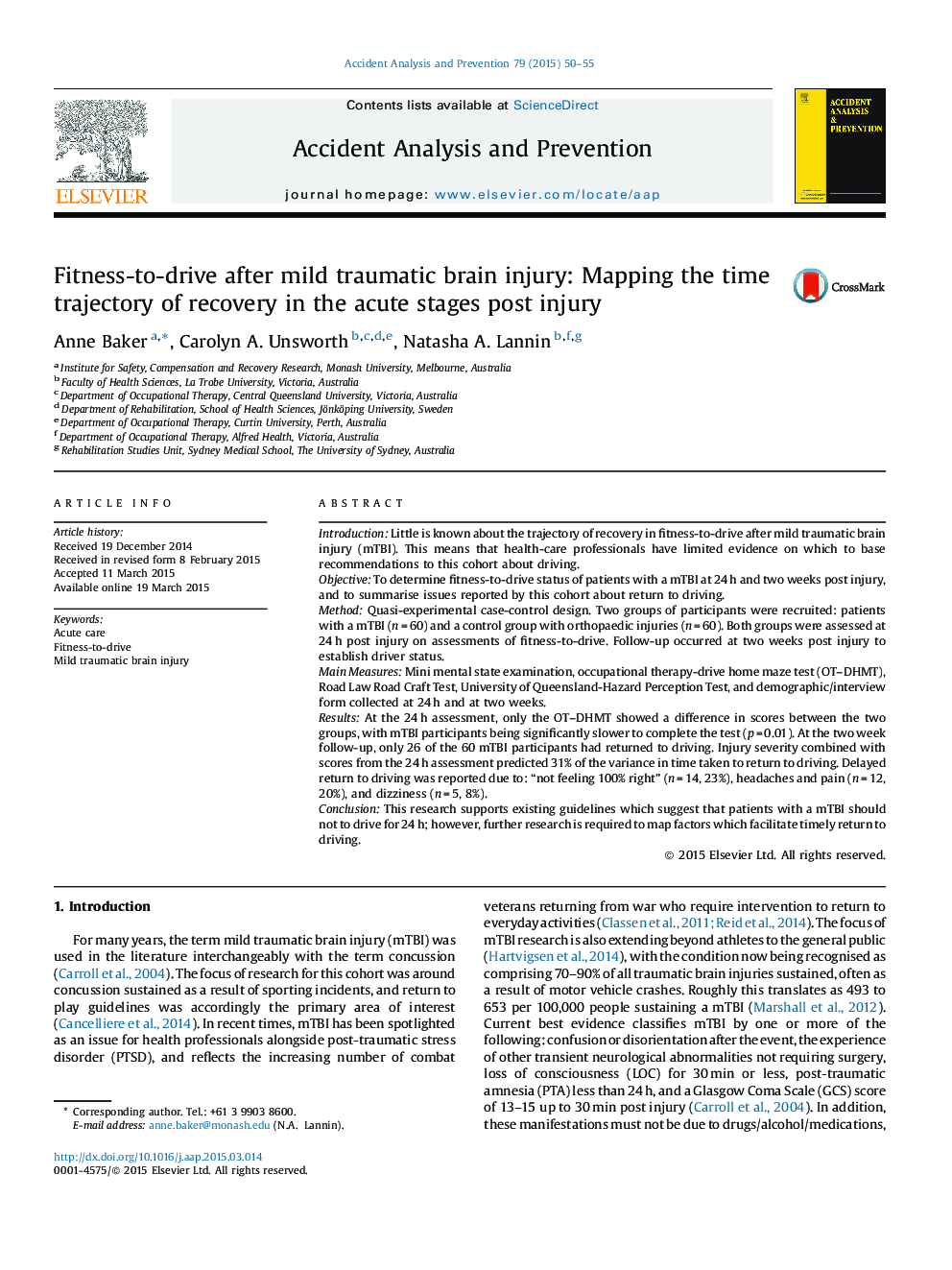| Article ID | Journal | Published Year | Pages | File Type |
|---|---|---|---|---|
| 572164 | Accident Analysis & Prevention | 2015 | 6 Pages |
•Two groups of participants were recruited: patients with a mTBI and a control group.•Both groups were assessed at 24 h post injury on assessments of fitness-to-drive.•Follow-up occurred at two weeks post injury to establish driver status.•This research confirms that patients with a mTBI should not to drive for 24 h.•Further research is required to map factors which facilitate timely return to driving.
IntroductionLittle is known about the trajectory of recovery in fitness-to-drive after mild traumatic brain injury (mTBI). This means that health-care professionals have limited evidence on which to base recommendations to this cohort about driving.ObjectiveTo determine fitness-to-drive status of patients with a mTBI at 24 h and two weeks post injury, and to summarise issues reported by this cohort about return to driving.MethodQuasi-experimental case-control design. Two groups of participants were recruited: patients with a mTBI (n = 60) and a control group with orthopaedic injuries (n = 60). Both groups were assessed at 24 h post injury on assessments of fitness-to-drive. Follow-up occurred at two weeks post injury to establish driver status.Main MeasuresMini mental state examination, occupational therapy-drive home maze test (OT–DHMT), Road Law Road Craft Test, University of Queensland-Hazard Perception Test, and demographic/interview form collected at 24 h and at two weeks.ResultsAt the 24 h assessment, only the OT–DHMT showed a difference in scores between the two groups, with mTBI participants being significantly slower to complete the test (p = 0.01). At the two week follow-up, only 26 of the 60 mTBI participants had returned to driving. Injury severity combined with scores from the 24 h assessment predicted 31% of the variance in time taken to return to driving. Delayed return to driving was reported due to: “not feeling 100% right” (n = 14, 23%), headaches and pain (n = 12, 20%), and dizziness (n = 5, 8%).ConclusionThis research supports existing guidelines which suggest that patients with a mTBI should not to drive for 24 h; however, further research is required to map factors which facilitate timely return to driving.
